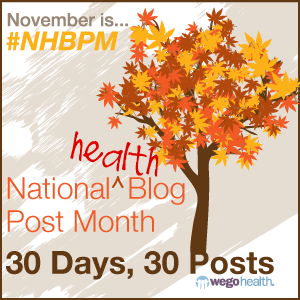Day 2 of Dblog Week 2015 is about those things that we keep to ourselves, and don’t necessarily like to talk about out in the open. Many of us share lots of aspects of our diabetes lives online for the world to see. Today we get to discuss some of the aspects of diabetes that we choose to keep private from the internet, family, and even friends. Why is it important to keep things to ourselves?

Recently I was asked to complete a survey on employee demographics. You know, the basic questions that it doesn’t take anything more than looking in a mirror to answer. Male, caucasian, brown hair, eyes that change color, glasses when I remember where I put them, no piercings (just holes where they used to be), tattooed, sneakers > dress shoes, untucked > tucked, tie over top button, and plaid if there is ever a choice.
Okay, so maybe they didn’t ask all of the questions that would lead to those answers, but for an employee demographic survey, it didn’t take long to get real personal. One of the sections asked me to voluntarily self-identify any disabilities that I have. I’m thinking, “Okay, so they want to know if I’m physically disabled, if I need accommodations to get to and fro, or something like that.” As I read through the list, I began to feel like it was less and less voluntary, and more and more accusatory.

I will be the first to say that I’m biased when it comes to surveys like this. Whether they are at work, at the doctor’s office, or as part of a contest to win a lifetime supply of alcohol swabs and cotton balls, these questions feel loaded, and require a person to think about themselves in a very particular way in order to answer them effectively. And for the life of me, I have a really hard time thinking of myself as “disabled” because of my diabetes.
I imagine many people with diabetes and other conditions on this list feel the same way. It is extremely difficult to think of ourselves as disabled, or that we might need special accommodations because we have to live with something outside of our control. The fact is, even without any of these things, any one of us could need special accommodations at any given point in time. But does that make us “disabled” because we are strong enough to admit that we might sometimes need help?
Diabetes as a disability is not something I like to think about. I don’t want to talk about it. I don’t even want to imagine it. Even if, in reality, diabetes or complications thereof may become a disability for me, it is not something that I am willing to give more than just a brief moment of panicked thought about.
Diabetes is challenging, but so is PTSD, depression, MS, epilepsy, cancer, and every other alleged disability on this survey. Yet, having any of these conditions does not make us disabled. As much as a disability is a physical challenge, it is also an allowance that a chronic condition is strong enough to limit us from doing the things that we accept that we are capable of doing.
For now, for this survey, I don’t wish to answer. None of the items on this survey, regardless of how many I may have personally, are anything that I am willing to accept as a disability. That does not mean that I may not need special accommodations from time to time, but that simply means that I’m human, not that I’m disabled. We all need help and special accommodations sometimes, and we shouldn’t be labeled negatively because of those needs.
Even for a lifetime supply of alcohol swabs and cotton balls.










